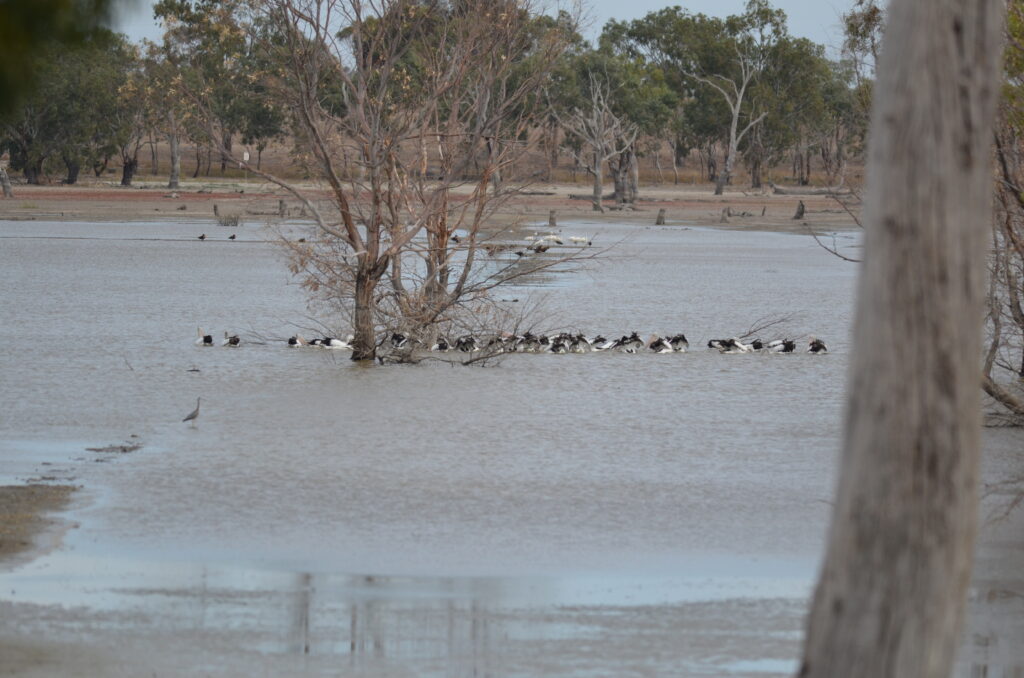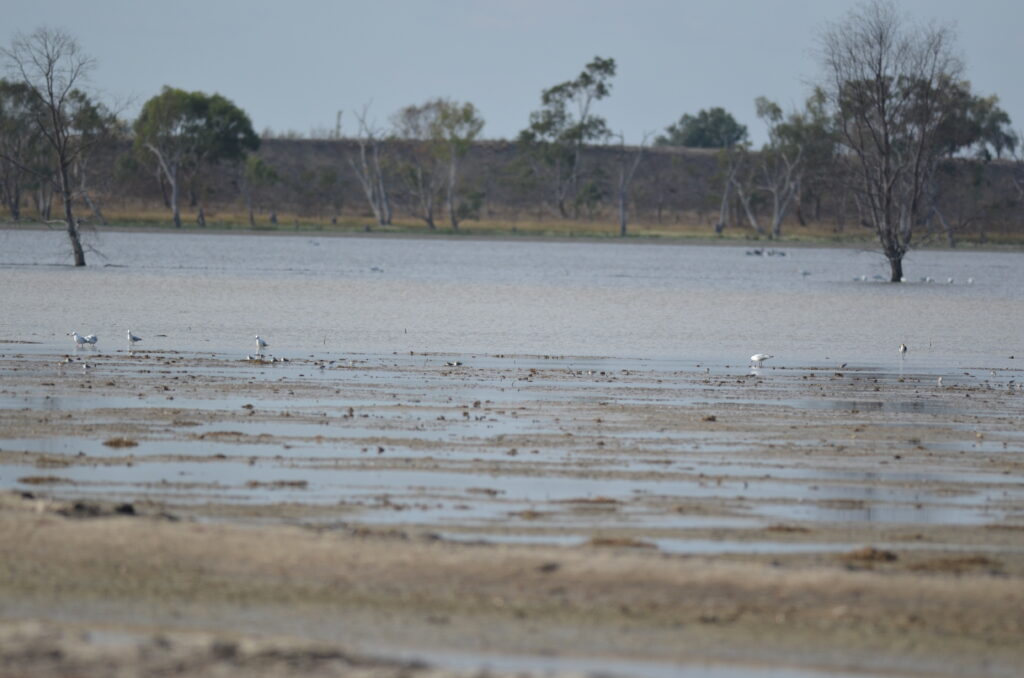Wings Across the World – Palaearctic Visitors at Dock Lake
Dock Lake April 2025 Bird Survey

Pelicans at Dock Lake April 2025
📸 Jonathon Starks
Date: 24 April 2025
Overview
The bird survey at Dock Lake reveals ongoing ecological changes as water levels continue to drop. With more sandbanks and lake bed exposed, especially on the western side, access around the lake has improved, allowing for less disturbance to birdlife during observations.
Water Levels and Vegetation
Water levels in Dock Lake continue to drop, exposing more sandbanks and lake bed. Vegetation, especially Chenopodium species, is increasingly colonizing the exposed western shore.
No frogs were heard calling at any of the six sites, indicating persistently dry conditions.
Bird Populations
The number of wetland birds at Dock Lake continues to decline, and most bird activity was concentrated at the northern end of the lake.
Key Observations:
- Red-necked Stint was the most numerous species (199 individuals), and notably, this was the first time it was recorded during this survey period. Many showed red breeding plumage, indicating their northward migration.
- Grey Teal returned in significant numbers (172), making them the second most common species.
- Australian Shelduck and Grey Teal were the only waterfowl species observed.
- Red-necked Avocet and Double-banded Plover were also recorded for the first time this season.
Double-banded Plovers are migratory, and breed in New Zealand during the southern hemisphere summer. The bird observed showed no breeding colouration and was most likely a juvenile undertaking its first migration across the Tasman Sea. - A White-bellied Sea-Eagle was briefly seen circling over Site 4.

Dock Lake drying up April 2025
📸 Jonathon Starks
Summary Table
| SITE | 1 | 2 | 3 | 4 | 5 | 6 | TOTAL |
| Australian Pelican | 85 | 85 | |||||
| Australian Shelduck | 2 | 12 | 14 | ||||
| Black-fronted Dotterel | 8 | 3 | 11 | ||||
| Double-banded Plover | 1 | 1 | |||||
| Grey Teal | 152 | 20 | 172 | ||||
| Masked Lapwing | 16 | 2 | 31 | 49 | |||
| Red-capped Plover | 8 | 16 | 24 | ||||
| Red-kneed Dotterel | 2 | 3 | 2 | 7 | |||
| Red-necked Avocet | 34 | 34 | |||||
| Red-necked Stint | 42 | 15 | 142 | 199 | |||
| Silver Gull | 4 | 28 | 32 | ||||
| White-bellied Sea-Eagle | 1 | 1 | |||||
| White-faced Heron | 1 | 1 | 2 | ||||
| White-necked Heron | 1 | 1 | |||||
| Yellow-billed Spoonbill | 9 | 9 | |||||
| TOTAL | 0 | 204 | 23 | 6 | 26 | 382 | 641 |
Conclusion
The April 2025 survey at Dock Lake highlights the wetland’s ecological benefits as a waypoint for migratory shorebirds. The arrival of palaearctic migrants such as the Red-necked Stint and Double-banded Plover suggests Dock Lake plays a beneficial role in global avian migration networks, offering stopover habitat during long-distance journeys.
The survey also reflects the changing ecosystem of the drying lake with reduced habitat limiting the diversity and abundance of wetland-dependent species. The absence of frog calls across all sites further signals a broader ecological dryness, potentially affecting amphibian populations and the food web they support.
**Strict hygiene measures are in place to prevent contamination*




